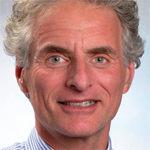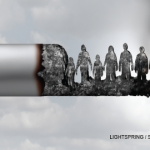
Monkey Business Images/shutterstock.com
Wash your hands. This most basic tenet of proper hygiene has been drummed into our heads for years. It’s an obvious infection prevention activity, yet for years, compliance among physicians and other caregivers has been lackluster. To rectify this matter, regulatory agencies began auditing hospital staff adherence to this axiom of infection prevention. Not only can the financial penalties be steep for failure to comply, but the embarrassment of scoring poorly would sink a hospital’s reputation; the carefully cultivated image of top-tier medical care would flow down the drain.
Paradoxically, it is exactly these two items—the sink and the drain—that can actually transform the cleansing act of hand washing into a potentially hazardous activity.1 The strategy of placing sinks near the bedside seems like a great idea—their close proximity to the patient would serve as a visual reminder for staff to wash. Right? However, it turns out that those U-shaped bends in the pipes that drain sinks are ideal locations for bacteria to aggregate and form vast colonies known as biofilms. Studies suggest that these colonies may be capable of retrograde movement, allowing bacteria to find their way back into the sink basin where water pouring out of a faucet can splash these bugs onto the hands of an unsuspecting washer.
This scenario may seem preposterous, but indirect evidence supports it. A retrospective study conducted in an intensive care unit in The Netherlands observed that following the removal of sinks from patient rooms and the introduction of “water-free patient care,” a significant reduction of colonization of multi-drug-resistant gram-negative bacteria in patients occurred.2 The longer the admission, the more likely that this effect was observed. Who knew?
The Medical Paradox in Clinical Practice
The paradoxical event can be fortuitous and haunting, striking out of nowhere like a bolt of lightning. Consider the patient whose cancer is seemingly cured only to succumb to a massive pulmonary embolism. In other scenarios, the paradox may arise as a considerable nuisance, such as an outbreak of psoriasis in a patient successfully treated with tumor necrosis factor blockade, an attack of podagra after a patient begins urate-lowering therapy or weight loss in a patient following the use of corticosteroid therapy. These are unexpected outcomes that fly in the face of logic.
Consider the odd relationship between smoking, among the worst personal habits that adversely impact one’s health, and ulcerative colitis (UC). Several studies have observed that UC is less prevalent in smokers than nonsmokers, whose odds ratio for developing the disease is 0.4. In fact, current smokers with UC are more likely to exhibit milder disease than former smokers and nonsmokers.3 These findings can make the plea for smoking cessation in this population a nettlesome conversation.
Paradoxical developments arising in the clinic or in the lab should not be viewed as nuisances or obstacles impeding the path of medical progress. They should serve as intellectual challenges or warning signals that dare us to return & reappraise our preconceived notions about health, disease & human biology.
A similar predicament may arise with some forms of heart disease. Prior studies have found that smokers undergoing thrombolytic therapy for ST-segment elevation myocardial infarction have lower in-hospital mortality than nonsmokers, a phenomenon called smoker’s paradox. Recent data extended this smoking benefit to patients with an ST-segment elevation myocardial infarction who required primary percutaneous coronary intervention.4 They, too, achieved more favorable outcomes than nonsmokers. The results of this study were not merely a statistical anomaly caused by smokers with coronary artery disease being younger than nonsmokers.
These paradoxical developments arising in the clinic or in the lab should not be viewed as nuisances or obstacles impeding the path of medical progress. They should serve as intellectual challenges or warning signals that dare us to return and reappraise our preconceived notions about health, disease and human biology. Unraveling their rationale might be daunting, but the knowledge gained can be considerable.
Foie Gras et Fromage
Among the best known medical paradoxes is one relating to the dietary habits of our Gallic friends. In France, the national consumption of saturated fats exceeds standards established by the World Health Organization by as much as 50%.5 Foie gras et fromage (cheese) and leisurely meals that are pleasurably enhanced by liberal quantities of wine—slow cooking at its very best. Yet despite the high intake of dietary cholesterol and saturated fat, the death rates related to coronary heart disease are significantly reduced in France compared with other countries, such as the U.S., where fat consumption and alcohol ingestion are far less.6 Might these findings be due to the French love of food and its careful preparation in contrast to the more puritanical American view of food as a commodity to be consumed quickly and in large quantities?7
When it comes to life expectancy, diet may even trump the economic success of a nation. Consider the tiny country of Albania, whose gross domestic product ranks 96th in the world and life expectancy, 77.35 years, is just 17 months shy of the American average. Although its infant mortality rates are among the highest in Europe and the high cost of food requires them to spend three-quarters of their income on food, Albanians share the low rates of cardiovascular mortality observed in neighboring countries in the Mediterranean area.8
In our hemisphere, there is the mystery of the Cuban health paradox. This small island country whose economy produces about $6,000 in goods and services per person annually, a mere fraction of U.S. economic activity, lacks access to many commonly used drugs. Specialty medical care is scarce, and obesity rates are high and growing. Yet Cuba boasts a life expectancy that surpasses the U.S. by six months.9 Could this finding be explained by their diet, too, one that is rich in fresh produce, but low in saturated fats? Or might it be related to their accessibility to primary care services and high compliance rates of childhood vaccination?
Another puzzle: Why do immigrants live longer than their native-born neighbors? For decades, it has been observed that people with greater income or formal education enjoy better health and tend to live longer than their counterparts who have less money or schooling. Despite their reduced incomes and lower levels of formal education, immigrants to the U.S., Australia, Germany and Canada live longer than native residents.
Similarly, the Hispanic paradox, unique to the U.S., describes the observation that people of Hispanic descent live longer than non-Hispanic Caucasians, who on average happen to be wealthier and better educated. For example, in 2006, life expectancy at birth in the U.S. was 2.5 years longer for Hispanics than for non-Hispanics. This paradox is real; data errors, such as small sample size or the underreporting of Hispanic ethnicity on death certificates, cannot fully explain it.10
A recent epidemiologic analysis may have solved these two riddles with a single explanation: It may be that lower smoking rates among Hispanics and immigrants confer upon them added years of living.11 I’ll drink to that!
The Paradox of Choice
Of course, the medical paradox can arise in situations that are unrelated to dietary factors or smoking behaviors. Rheumatologists of a certain age may recall the era when there were no viable options to treat or prevent osteoporosis. Although we recognized that our judicious use of corticosteroids might contribute to further bone loss in our patients, we had few therapeutic interventions to reduce the ongoing bone demineralization other than advising our patients to take calcium and vitamin D supplements and hope for the best. Then along came bisphosphonates, and suddenly, we had a way to reduce the risk for hip or vertebral bone fracture. With the advent of generic formulations of these products, the cost of bisphosphonates dropped.
However, a recent study led by Daniel Solomon, MD, MPH, professor of medicine at Harvard Medical School in Boston, described an odd paradox.12 They studied claims data of an older population of adults who had sustained a hip fracture, and they observed that osteoporosis medication use in this population fell precipitously over the past several years. For example, in 2002, medication use was 40.2%, but by 2011, it was reduced by half, to 20.5%. How could this be? Because the risk of suffering a second hip fracture is about 10%, one would reckon that most patients would be inclined to seek treatment that could cut their risk by half. Clearly, this was not the case. Instead, the drumbeat of warnings in the lay press and media about the hazards of bisphosphonate therapy, such as osteonecrosis of the jaw, atypical femoral fractures or atrial fibrillation—all rather rare events—have frightened patients away from optimal osteoporosis therapies.
Risk aversion, even when the risks are rare, trumps promoting bone health. Quite the paradox.
Sometimes, having choices can be problematic. In his book, The Paradox of Choice: Why More Is Less, psychologist Barry Schwartz, professor of social theory and social action at Swarthmore College in Pennsylvania, takes aim at a central tenet of Western societies—freedom of choice. He argues that more choice can be debilitating and makes us more dissatisfied.13 When perusing the multitude of retirement plan options that some employers offer, studies have shown that the more fund options that are offered, the fewer the people who participate. In fact, the highest participation rates are among those employees who are automatically enrolled in their company’s standard plan unless they actively choose not to.14 The rheumatology analogy to this conundrum is when our patients become anxious when offered to choose among the many biological therapies. With over a dozen offerings on the market and more in development, the freedom of choice can be paralyzing.
Still, I doubt that any of us would ever want to return to the days when the only choices we could offer patients were two formulations of gold salts and a handful of harmful non-steroidal anti-inflammatory drugs. To quote Dr. Emile Duclaux, a physician disciple of Dr. Louis Pasteur: “It is because science is sure of nothing that it is always advancing.”15 Vive le paradoxe!
 Simon M. Helfgott, MD, is associate professor of medicine in the Division of Rheumatology, Immunology and Allergy at Harvard Medical School in Boston.
Simon M. Helfgott, MD, is associate professor of medicine in the Division of Rheumatology, Immunology and Allergy at Harvard Medical School in Boston.
References
- Branswell H. Hospitals installed more sinks to stop infections. The sinks can make the problem worse. STAT. 2016 Oct 25.
- Hopman J, Bos R, Vos J, et al. Reduced rate of MDROs after introducing ‘water-free patient care’ on a large intensive care unit in the Netherlands. Antimicrob Resist Infect Control. 2015;4(Suppl 1):O40.
- Lunney PC, Leong RWL. Review article: Ulcerative colitis, smoking and nicotine therapy. Aliment Pharmacol Ther. 2012 Dec:36(11–12):997–1008.
- Gupta T, Kolte D, Khera S, et al. Smoker’s paradox in patients with ST segment elevation myocardial infarction undergoing primary percutaneous coronary intervention. J Am Heart Assoc. 2016 Apr 22;5(4): pii: e003370.
- Ferrieres J. The French paradox. Lessons for other countries. Heart. 2004 Jan;90(1):107–111.
- Ferdman RA. Where people around the world eat the most sugar and fat. The Washington Post. 2015 Feb 5.
- Rozin P, Fischler C, Imada S, et al. Attitudes to food and the role of food in life in the U.S.A., Japan, Flemish Belgium and France: Possible implications for the diet-health debate. Appetite. 1999;33:163–180.
- Gjonca A, Bobak M. Albanian paradox, another example of protective effect of Mediterranean lifestyle? Lancet. 1997 Dec 20–27;350(9094):1815–1817.
- Sanger-Katz M. Can Cuba escape poverty but stay healthy? The New York Times. 2014 Dec 18.
- Blue L. The ethnic health advantage. Scientific American. 2011 Oct 1.
- Blue L, Fenelon A. Explaining low mortality among US immigrants relative to native-born Americans: The role of smoking. Int J Epidemiol. 2011 Jun;40(3):786–793.
- Solomon DH, Johnston SS, Boytsov NN, et al. Osteoporosis medication use after hip fracture in U.S. patients between 2002 and 2011. J Bone Miner Res. 2014 Sep;29(9):1929–1937.
- Schwartz B. The Paradox of Choice. Why more is less. Harper Perennial, New York 2004.
- Tugend A. Too many choices: A problem that can paralyze. The New York Times. 2010 Feb 26.
- Reviews in Computational Chemistry. Vol. 18. Lipkowitz KB, Boyd DB, eds. John Wiley and Sons. Hoboken, N.J., 2002.


